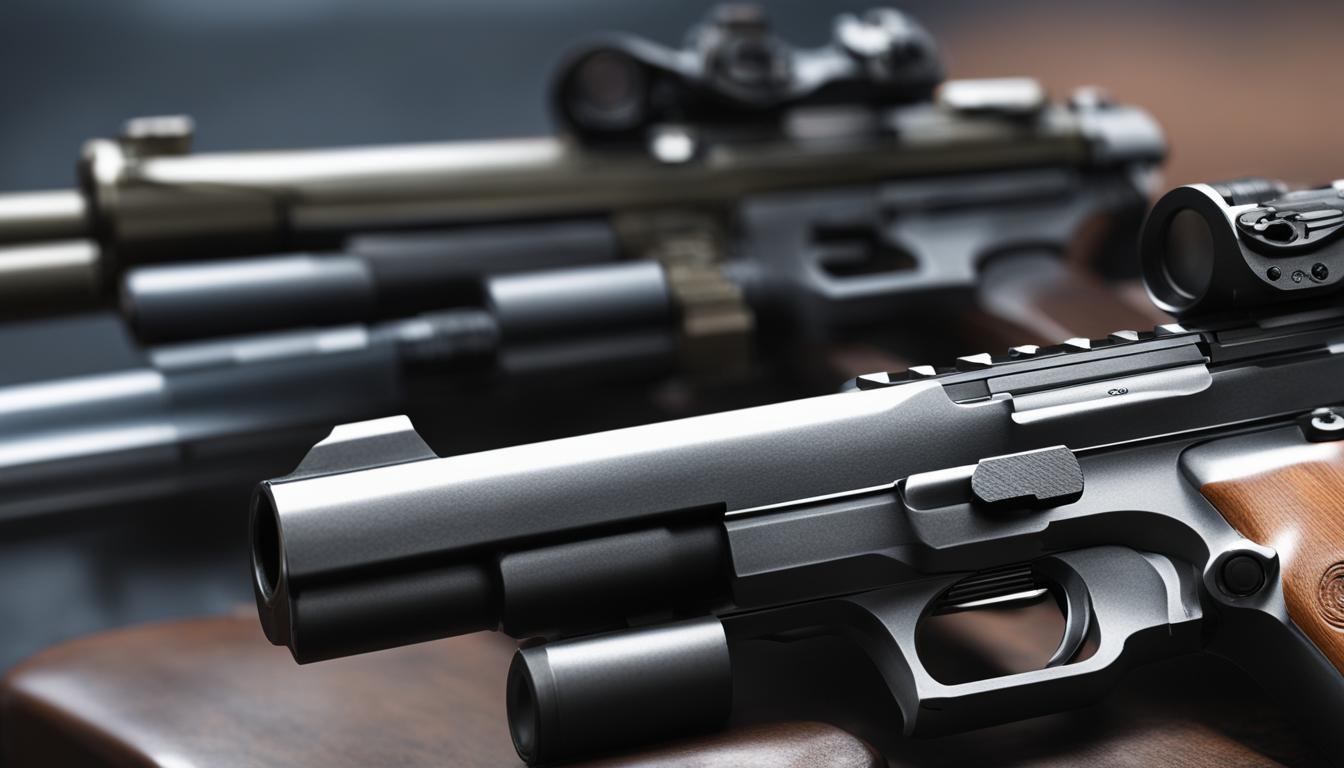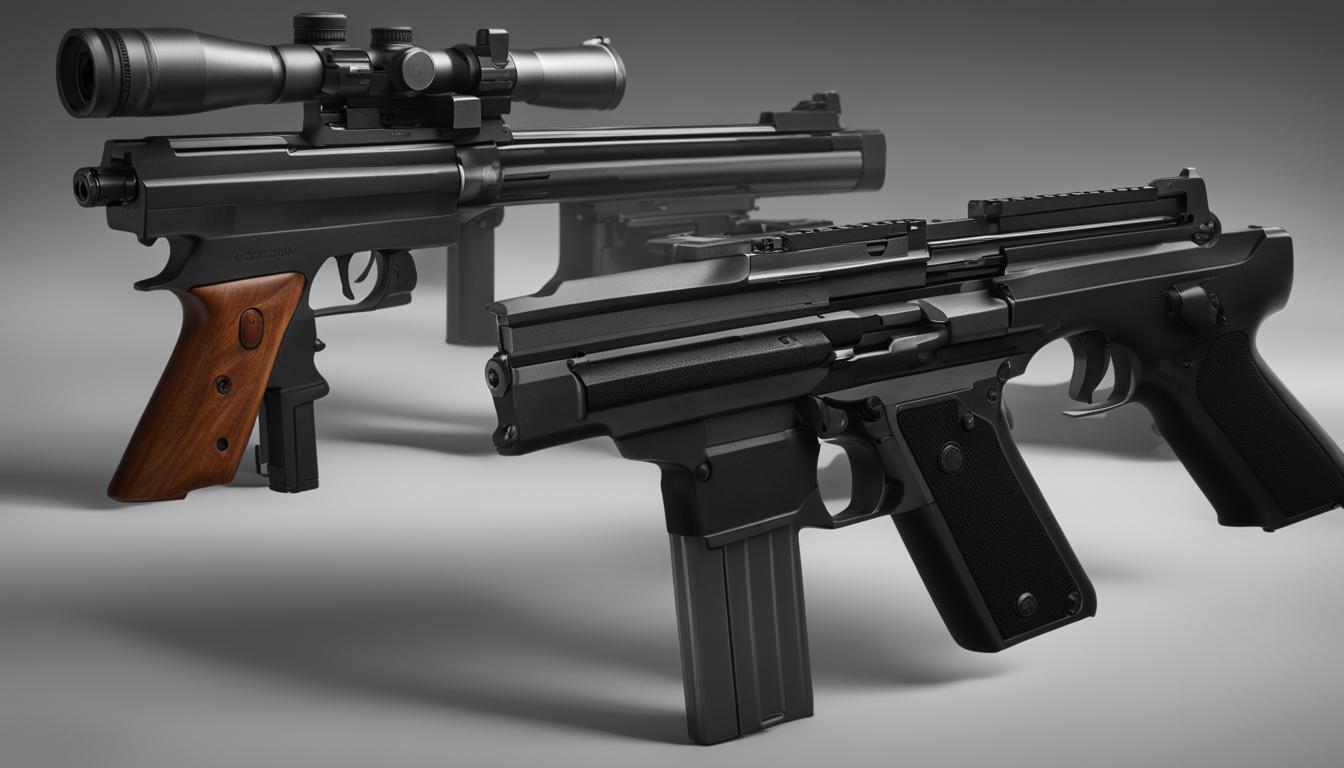
Firepower 101: Demystifying Recoil and Blowback Operating Systems
Firearms come in many shapes and sizes, but when it comes to their inner workings, there are two basic styles of actions that make them function: recoil-operated actions and blowback actions. Understanding the differences between these two actions is key to appreciating how different guns operate.

Recoil-Operated Actions
The defining trait of a recoil-operated firearm is that some of the energy from firing a cartridge is used to cycle the action. Here's how it works in a general sense:
- The firearm is ready to fire with a cartridge in the chamber. The bolt or sliding breechblock is locked in the closed position.
- When the trigger is pulled, the firing pin strikes the primer of the cartridge, igniting the propellant.
- As the propellant rapidly burns and expands, pressure builds up in the barrel, pushing the bullet down the barrel.
- At the same time, the buildup of pressure creates an equal and opposite reactive force that drives the firearm rearwards against the shooter's shoulder. This rearward movement of the firearm is known as recoil.
- As the firearm recoils, the bolt or breechblock begins moving rearward as well, unlocked from the closed position.
- After the bullet exits the barrel and pressure drops, the rearward motion of the bolt or breechblock operates the cycling process that extracts and ejects the spent casing, then loads a fresh cartridge from the magazine.
- The recoil energy also re-cocks the firearm's hammer or striker mechanism to ready it for the next shot.
- Finally, a spring pushes the bolt or breechblock back into the locked position in the chamber, readying the next cartridge for firing when the trigger is pulled again.
This sequence demonstrates how recoil-operated actions harness the firearm's rearward momentum to cycle a new round. Different types of guns will have varying mechanisms for unlocking, recoiling, extracting, ejecting, reloading, and re-cocking, but the basic recoil-operated principle remains the same.
Some examples of common recoil-operated firearms include:
- Semi-automatic pistols like the Colt M1911
- Shotguns like the Remington Model 1100
- Many semi-automatic rifles including the M1 Garand and AR-15 platforms
- Machine guns like the M2 Browning or MG42
Blowback Actions
In contrast to recoil-operated actions, blowback actions do not harness recoil energy from firing. Instead, they use the built-up pressure inside the chamber to eject spent cases and load new cartridges. Here's how blowback actions work:
- The firearm is ready to fire with a cartridge in the chamber. The bolt is locked in the closed position, usually just by being held there by a strong spring.
- When fired, pressure builds up rapidly in the chamber just like in a recoil-operated gun.
- This pressure pushes rearwards against the cartridge, bolt face, and spring holding the bolt closed.
- When pressure exceeds the spring's resistance, the bolt unlocks and blows rearwards from the pressure.
- As the bolt travels back, it extracts and ejects the spent casing.
- The bolt's momentum compresses the recoil spring as it reaches the rearward position.
- The compressed spring then pushes the bolt forward again, feeding a fresh cartridge into the chamber.
Blowback actions are simple and effective. But they require careful engineering, since the mass of the bolt and strength of the spring must be precisely balanced against the size of the cartridge. Heavier bolts and stiffer springs are needed to handle more powerful ammunition safely and effectively.
Common examples of blowback operated firearms include:
- Many semi-auto .22LR rifles and pistols
- Select-fire submachine guns like the MP5 and Uzi
- Machine pistols like the Glock 18 and Beretta 93R
- Some shotgun types including the Saiga-12
- The bolt action CZ 452 and CZ 455 rimfire rifles
Comparing Recoil and Blowback Actions
While both systems effectively load and unload cartridges in semi-automatic or fully automatic firearms, recoil and blowback actions have some key differences:
| Recoil-Operated | Blowback |
|---|---|
| Uses recoil energy to cycle action | Uses chamber pressure to cycle action |
| Compatible with wider range of cartridges and calibers | Typically limited to lower pressure pistol cartridges |
| Allows lighter bolt and slide assemblies | Requires heavy bolt or slide to resist blowback |
| More complex design | Simpler design |
| Found on many types of firearms | Mostly used on smaller caliber arms |
In the end, each system has advantages and disadvantages that make them suitable for different types of firearms and shooting applications. Both recoil and blowback successfully harness the physics of cartridge ignition to quickly chamber rounds again and again. Understanding how these actions work unlocks a deeper appreciation of firearms technology and history.

The Invention and History of Recoil Versus Blowback Actions
The development of recoil and blowback actions dates back to the late 19th century, an era of great innovation and experimentation in firearms design.
Recoil-operated weapons emerged first in the 1880s. The earliest true recoil-operated machine gun was the Maxim gun invented by Hiram Stevens Maxim in 1883. His use of recoil energy to eject rounds and chamber fresh cartridges from a belt was a huge breakthrough. The Maxim gun became widely adopted and influenced many later recoil-operated designs.
Soon afterwards in the 1890s, blowback actions were pioneered on smaller self-loading pistols like the Hugo Borchardt C-93 and C96 "Broomhandle" Mauser. These early blowback guns used simple blowback mechanisms to unload and reload pistol cartridges.
With both recoil and blowback systems invented, firearms engineers adapted and improved upon these actions throughout the early 1900s up through World War 2. Famed weapons like the Colt M1911, Browning BAR, Thompson submachine gun, and many others utilized recoil operation. Blowback became widely used in smaller pistols and submachine guns firing pistol rounds.
After the wars, military experimentation gave way to commercial popularity. Surplus firearms parts led to the proliferation of recoil and blowback actions in civilian semi-automatic rifles, shotguns, and pistols in the 1950s and beyond. Modern firearms manufacturing methods expanded the versatility and availability of both systems.
Today, recoil and blowback remain indispensable, paired in countless different ways to suit innumerable firearm models and shooting applications. The two systems stand as lasting testaments to late 19th century mechanical ingenuity that forever changed the firearms landscape. Their different virtues continue enabling both recreational and professional shooters to safely enjoy the thrill of unmanned reloading.
Choosing Between Recoil and Blowback Actions for Marksmanship
For recreational and competitive shooters, understanding recoil versus blowback operation informs smart firearms selection. Depending on your shooting needs, each system has strengths to consider:
Recoil-operated actions tend to offer:
- Greater versatility in calibers and cartridges
- Less perceived recoil forces due to heavier operating parts
- Potentially greater accuracy in semi-auto platforms
Blowback systems are generally known for:
- Lightweight and fast-handling characteristics
- Low muzzle blast and report with smaller cartridges
- Increased affordability and parts interchangeability
Of course, there are exceptions to every rule. But in choosing a firearm action for a particular shooting sport, these principles help match the right system to your needs. A 9mm blowback pistol makes an affordable training and plinking gun, while a recoil-operated .308 rifle is well-suited for long distance target shooting.
Understanding how the gun works internally brings shooters closer to mastery behind the trigger. In firearm actions, as in all things ballistic, there are always trade-offs. But whether you need the versatility of recoil operation, or the simplicity and cost savings of blowback, both systems offer unique advantages to improve your marksmanship.
Conclusion
In closing, recoil and blowback represent the two foundational methods of semi-automatic and automatic firearm operation. Both systems harness the physics of exploding propellant to quickly unload and reload cartridges with each trigger pull. Recoil operation uses backward momentum of the firearm to eject spent cases and chamber new rounds. Blowback systems utilize pressure in the chamber to force rearward motion of the bolt or slide.
While they have their trade-offs, recoil and blowback actions empower both military and civilian shooters with reliable, unmanned reloading. Understanding these different mechanisms provides insight into how firearms work and makes for smarter selections depending on your shooting purpose. With a grasp of these basic actions, enthusiasts can better appreciate over a century of ingenious engineering that goes into unlocking the speed, versatility and thrill of semi-automatic firepower.